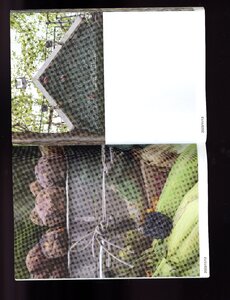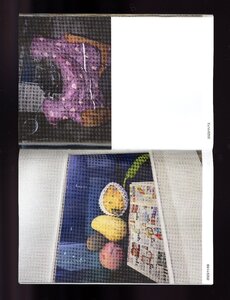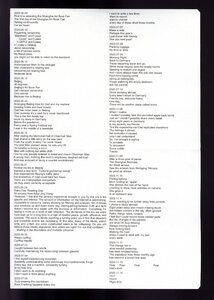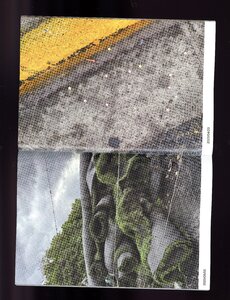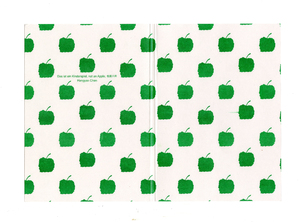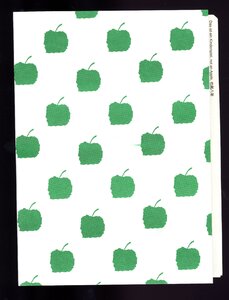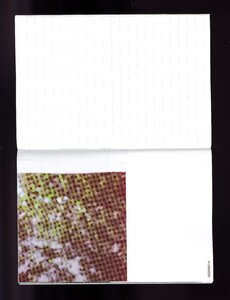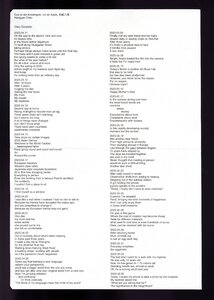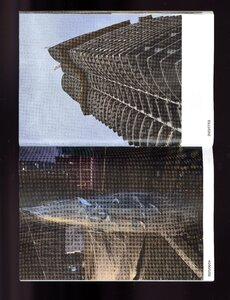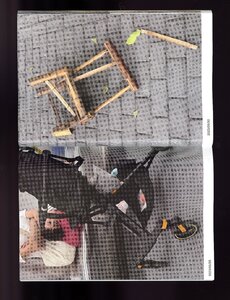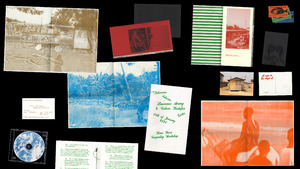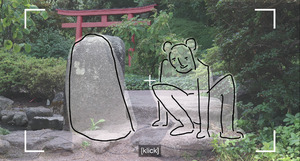Werk
Alle Inhalte mit Metadaten des Vokabulars "Werk". Sie sehen nur Inhalte, für die Sie berechtigt sind.
1880 Inhalte
- Seite 1 von 157
Publikation zur Ausstellung
- Titel
- Publikation zur Ausstellung
- Untertitel
- Publikation Design: Jonathan Blaschke und Moritz Simon
- Autor/in
- Kategorie
- Schlagworte
- Mitwirkende
- Sprache
- Titel
- Publikation zur Ausstellung
- Urheberrechtshinweis
- © Hangyan Chen
- Freigabe Nutzung HfG
- Beziehung/Funktion
- Semester
- Studiengang
- Typ der Abschlussarbeit
- Importiert am
- 31.05.2024
- Übergeordnete Sets
- 1
Publikation zur Ausstellung
- Titel
- Publikation zur Ausstellung
- Untertitel
- Publikation Design: Jonathan Blaschke und Moritz Simon
- Autor/in
- Kategorie
- Schlagworte
- Mitwirkende
- Sprache
- Titel
- Publikation zur Ausstellung
- Urheberrechtshinweis
- © Hangyan Chen
- Freigabe Nutzung HfG
- Beziehung/Funktion
- Semester
- Studiengang
- Typ der Abschlussarbeit
- Importiert am
- 31.05.2024
- Übergeordnete Sets
- 1
Publikation zur Ausstellung
- Titel
- Publikation zur Ausstellung
- Untertitel
- Publikation Design: Jonathan Blaschke und Moritz Simon
- Autor/in
- Kategorie
- Schlagworte
- Mitwirkende
- Sprache
- Titel
- Publikation zur Ausstellung
- Urheberrechtshinweis
- © Hangyan Chen
- Freigabe Nutzung HfG
- Beziehung/Funktion
- Semester
- Studiengang
- Typ der Abschlussarbeit
- Importiert am
- 31.05.2024
- Übergeordnete Sets
- 1
Publikation zur Ausstellung
- Titel
- Publikation zur Ausstellung
- Untertitel
- Publikation Design: Jonathan Blaschke und Moritz Simon
- Autor/in
- Kategorie
- Schlagworte
- Mitwirkende
- Sprache
- Titel
- Publikation zur Ausstellung
- Urheberrechtshinweis
- © Hangyan Chen
- Freigabe Nutzung HfG
- Beziehung/Funktion
- Semester
- Studiengang
- Typ der Abschlussarbeit
- Importiert am
- 31.05.2024
- Übergeordnete Sets
- 1
Publikation zur Ausstellung
- Titel
- Publikation zur Ausstellung
- Untertitel
- Publikation Design: Jonathan Blaschke und Moritz Simon
- Autor/in
- Kategorie
- Schlagworte
- Mitwirkende
- Sprache
- Titel
- Publikation zur Ausstellung
- Urheberrechtshinweis
- © Hangyan Chen
- Freigabe Nutzung HfG
- Beziehung/Funktion
- Semester
- Studiengang
- Typ der Abschlussarbeit
- Importiert am
- 31.05.2024
- Übergeordnete Sets
- 1
Publikation zur Ausstellung
- Titel
- Publikation zur Ausstellung
- Untertitel
- Publikation Design: Jonathan Blaschke und Moritz Simon
- Autor/in
- Kategorie
- Schlagworte
- Mitwirkende
- Sprache
- Titel
- Publikation zur Ausstellung
- Urheberrechtshinweis
- © Hangyan Chen
- Freigabe Nutzung HfG
- Beziehung/Funktion
- Semester
- Studiengang
- Typ der Abschlussarbeit
- Importiert am
- 31.05.2024
- Übergeordnete Sets
- 1
Publikation zur Ausstellung
- Titel
- Publikation zur Ausstellung
- Untertitel
- Publikation Design: Jonathan Blaschke und Moritz Simon
- Autor/in
- Kategorie
- Schlagworte
- Mitwirkende
- Sprache
- Titel
- Publikation zur Ausstellung
- Urheberrechtshinweis
- © Hangyan Chen
- Freigabe Nutzung HfG
- Beziehung/Funktion
- Semester
- Studiengang
- Typ der Abschlussarbeit
- Importiert am
- 31.05.2024
- Übergeordnete Sets
- 1
Publikation zur Ausstellung
- Titel
- Publikation zur Ausstellung
- Untertitel
- Publikation Design: Jonathan Blaschke und Moritz Simon
- Autor/in
- Kategorie
- Schlagworte
- Mitwirkende
- Sprache
- Titel
- Publikation zur Ausstellung
- Urheberrechtshinweis
- © Hangyan Chen
- Freigabe Nutzung HfG
- Beziehung/Funktion
- Semester
- Studiengang
- Typ der Abschlussarbeit
- Importiert am
- 31.05.2024
- Übergeordnete Sets
- 1
Publikation zur Ausstellung
- Titel
- Publikation zur Ausstellung
- Untertitel
- Publikation Design: Jonathan Blaschke und Moritz Simon
- Autor/in
- Kategorie
- Schlagworte
- Mitwirkende
- Sprache
- Titel
- Publikation zur Ausstellung
- Urheberrechtshinweis
- © Hangyan Chen
- Freigabe Nutzung HfG
- Beziehung/Funktion
- Semester
- Studiengang
- Typ der Abschlussarbeit
- Importiert am
- 31.05.2024
- Übergeordnete Sets
- 1
Publikation zur Ausstellung
- Titel
- Publikation zur Ausstellung
- Untertitel
- Publikation Design: Jonathan Blaschke und Moritz Simon
- Autor/in
- Kategorie
- Schlagworte
- Mitwirkende
- Sprache
- Titel
- Publikation zur Ausstellung
- Urheberrechtshinweis
- © Hangyan Chen
- Freigabe Nutzung HfG
- Beziehung/Funktion
- Semester
- Studiengang
- Typ der Abschlussarbeit
- Importiert am
- 31.05.2024
- Übergeordnete Sets
- 1
Publikations-Inhalt "A man in the shape of..."
- Titel
- Publikations-Inhalt "A man in the shape of..."
- Autor/in
- Beschreibung (de)
- Publikations Inhalt "A man in the shape of..."
- Beschreibung (en)
- Publication content "A man in the shape of..."
- Kategorie
- Titel
- Publikations-Inhalt "A man in the shape of..."
- Urheberrechtshinweis
- © Calvin Kudufia
- Rechtsschutz/Lizenz
- Freigabe Nutzung HfG
- Beziehung/Funktion
- Projektleiter/in
- Semester
- Studiengang
- Typ der Abschlussarbeit
- Importiert am
- 01.06.2024
- Übergeordnete Sets
- 1
Prolog: Im Zoo
- Titel
- Prolog: Im Zoo
- Titel (en)
- Attempts to rewrite
- Untertitel des Projekts/Werks (en)
- Exhibition with three video works: On the way to the station, Prologue: In the zoo, Germania Girl - Concert in the castle!
- Autor/in
- Beschreibung (de)
- Obszön, nerdy und aus Japan: Anime im Fernsehen zu schauen galt in vielen Haushalten in Deutschland als verrufen. Diese Rezeption von Anime entspricht zugleich den exotisierenden Stereotypen, die der (vorgeblich gesittete) Westen auf Japan projiziert. In ihrer Diplomarbeit nutzt Miki Feller Anime als Medium, um über anti-asiatischen Rassismus zu sprechen. Entstanden sind drei Videoarbeiten, die sie in ihrer Ausstellung „Versuche zu überschreiben“ gezeigt hat. Jedes Video erzählt eine eigene Geschichte, die in Karlsruhe spielt, unter anderem am Bahnhof, am Zoo und am Schloss. Es sind Versuche, eine vorherrschend weiße Umgebung zu beschreiben, sich dazu zu positionieren und davon zu distanzieren.
Die Videos wurden in Zusammenarbeit mit folgenden Personen realisiert und ausgestellt: „Versuche zu überschreiben“ mit Max Mandery (Dramaturgische Beratung), Bruno Jacoby (Grafik), Leia Walz (Ausstellungsgestaltung), Jaya Demmer (Textil), Johannes Thimm und Lina Determann (Rampe) / „Auf dem Weg zum Bahnhof“ mit Bruno Jacoby (Grafik) / „Prolog: Im Zoo“ mit Sophia Stadler (Storyboard, Schnitt & Fotos) / „Germania Girl – Konzert im Schloss!“ mit Max Mandery (Dramaturgische Beratung), Bruno Jacoby (Grafik), Yun-Wen Liu (Fotos & Farbkorrektur), Vanessa Bosch (Musik), Ricarda Fischer (Musik & Sounddesign), Meret Bhend und Paulina Mimberg (Farbkorrektur), Luise Peschko (Dialog Editing) sowie Nele Faust, Alejandra Janus, Melanie Berner, Rita Andrulyte, Nini Lü, Jörg Stegmann, Laura Haak und Josefine Scheu (Stimmen).
- Obszön, nerdy und aus Japan: Anime im Fernsehen zu schauen galt in vielen Haushalten in Deutschland als verrufen. Diese Rezeption von Anime entspricht zugleich den exotisierenden Stereotypen, die der (vorgeblich gesittete) Westen auf Japan projiziert. In ihrer Diplomarbeit nutzt Miki Feller Anime als Medium, um über anti-asiatischen Rassismus zu sprechen. Entstanden sind drei Videoarbeiten, die sie in ihrer Ausstellung „Versuche zu überschreiben“ gezeigt hat. Jedes Video erzählt eine eigene Geschichte, die in Karlsruhe spielt, unter anderem am Bahnhof, am Zoo und am Schloss. Es sind Versuche, eine vorherrschend weiße Umgebung zu beschreiben, sich dazu zu positionieren und davon zu distanzieren.
- Beschreibung (en)
- Obscene, nerdy, and from Japan: In many German households, it was forbidden to watch anime on television. This perception of anime mirrors the exoticizing stereotypes projected onto Japan by the (allegedly civilized) West. In her diploma project, Miki Feller addresses anti-Asian racism in Germany by using anime as the medium. She created three video works and showcased them in the exhibition “Versuche zu überschreiben.” Each video tells a story set in Karlsruhe, for example, at the train station, the zoo, and the castle. These videos serve as attempts to describe a predominantly white environment, to position oneself in relation to it, and to distance oneself from it.
The videos were created and presented in collaboration with the following people: "Versuche zu überschreiben" with Max Mandery (dramaturgical consultation), Bruno Jacoby (graphics), Leia Walz (exhibition design), Jaya Demmer (textile), Johannes Thimm and Lina Determann (ramp) / "Auf dem Weg zum Bahnhof" with Bruno Jacoby (graphics) / "Prolog: Im Zoo" with Sophia Stadler (storyboard, editing & photos) / "Germania Girl - Konzert im Schloss!" with Max Mandery (dramaturgical consultation), Bruno Jacoby (graphics), Yun-Wen Liu (photos & color grading), Vanessa Bosch (music), Ricarda Fischer (music & sound design), Meret Bhend and Paulina Mimberg (color grading), Luise Peschko (dialog editing) as well as Nele Faust, Alejandra Janus, Melanie Berner, Rita Andrulyte, Nini Lü, Jörg Stegmann, Laura Haak, and Josefine Scheu (voice acting).
- Obscene, nerdy, and from Japan: In many German households, it was forbidden to watch anime on television. This perception of anime mirrors the exoticizing stereotypes projected onto Japan by the (allegedly civilized) West. In her diploma project, Miki Feller addresses anti-Asian racism in Germany by using anime as the medium. She created three video works and showcased them in the exhibition “Versuche zu überschreiben.” Each video tells a story set in Karlsruhe, for example, at the train station, the zoo, and the castle. These videos serve as attempts to describe a predominantly white environment, to position oneself in relation to it, and to distance oneself from it.
- Typ des Projekts/Werks
- Schlagworte
- Mitwirkende
- Dank an
- Sprache
- Technik/Verfahren/Formate
- MP4
- Dauer
- 2 min
- Stadt
- Land
- Titel
- Prolog: Im Zoo
- Urheberrechtshinweis
- © Miki Feller
- Freigabe Nutzung HfG
- Medienersteller/in
- Beziehung/Funktion
- Medien-Beschreibung
- Welche Beziehung haben wir zu unserer Umgebung? Welche Rolle spielt race dabei? Das Video „Prolog: Im Zoo“ zeigt zwei junge, deutsch-asiatische Frauen im Japangarten des Karlsruher Zoos. Sie fühlen sich zunächst unbehaglich, weil sie von ihren weißen Mitmenschen als Teil des Japangartens gelesen werden (könnten). Dann aber inszenieren sie sich – im Angesicht des weißen Blickes – selbst.
"Prolog: Im Zoo" wurde im Rahmen der Ausstellung "Versuche zu überschreiben" gezeigt.
- Welche Beziehung haben wir zu unserer Umgebung? Welche Rolle spielt race dabei? Das Video „Prolog: Im Zoo“ zeigt zwei junge, deutsch-asiatische Frauen im Japangarten des Karlsruher Zoos. Sie fühlen sich zunächst unbehaglich, weil sie von ihren weißen Mitmenschen als Teil des Japangartens gelesen werden (könnten). Dann aber inszenieren sie sich – im Angesicht des weißen Blickes – selbst.
- Medien-Beschreibung (en)
- What relationship do we have with our surroundings? What impact does race have on this? The video "Prolog: Im Zoo" shows two young, German-Asian women in the Japanese garden at Karlsruhe Zoo. They initially feel uncomfortable because of the white visitors, who (may) perceive them as part of the Japanese garden. However, they decide to stage themselves despite the white gaze.
"Prolog: Im Zoo" was shown as part of the exhibition "Versuche zu überschreiben."
- What relationship do we have with our surroundings? What impact does race have on this? The video "Prolog: Im Zoo" shows two young, German-Asian women in the Japanese garden at Karlsruhe Zoo. They initially feel uncomfortable because of the white visitors, who (may) perceive them as part of the Japanese garden. However, they decide to stage themselves despite the white gaze.
- Projektleiter/in
- Semester
- Studiengang
- Typ der Abschlussarbeit
- Importiert am
- 04.03.2024
- Übergeordnete Sets
- 1
